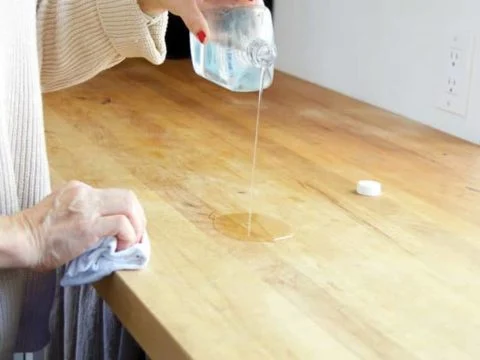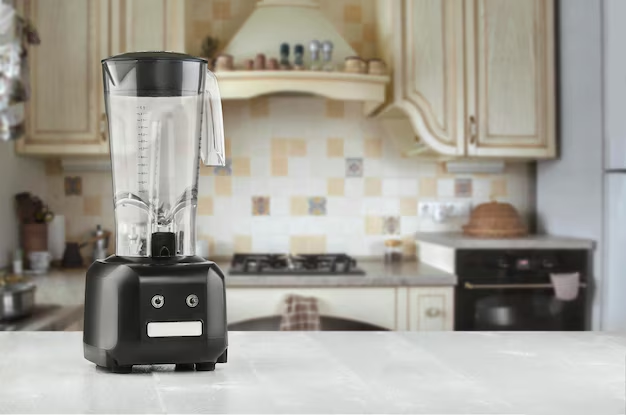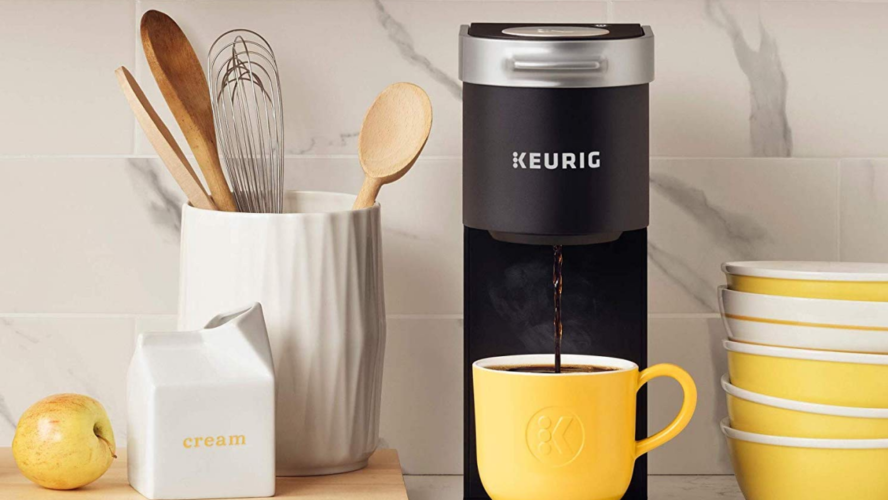A butcher block is a strong and attractive wooden countertop often used for chopping and preparing food. Its durability makes it a popular choice in many kitchens, but proper cleaning is essential to keep it in good shape and hygienic. Regular cleaning helps prevent bacteria buildup and keeps the wood looking great.
1. Gather Your Supplies
Before you start cleaning, gather thrub in the directioe supplies you’ll need:
– Dish soap: Use a mild, biodegradable kind.
– Sponge or soft cloth: For everyday wiping.
– Vinegar: A natural disinfectant that cleans and deodorizes.
– Mineral oil: Important for keeping the wood moisturized.
Optional Supplies:
– Baking soda: Effective for tackling tough odors and stains.
– Food-safe wood cleaner: Made specifically for wood surfaces.
2. Daily Cleaning Routine
After each use, it’s important to clean your butcher block properly:
1. Wipe Down: Use a damp cloth or sponge to clean the surface. This removes food particles and germs.
2. Use Mild Soap if Needed: If you see stains or residue, add a little dish soap to your sponge and gently scrub the area.
3. Dry Immediately: After cleaning, dry the surface with a clean towel. This prevents moisture from getting into the wood, which can cause warping or cracking.
3. Deep Cleaning (Weekly or Biweekly)
For a more thorough clean, do this every week or two:
1. Prepare a Cleaning Solution: Mix equal parts vinegar and water in a bowl.
2. Scrub Gently: Using a sponge or soft brush, apply the mixture to the butcher block.
3. Rinse and Dry: Rinse the block with water and then dry it completely with a towel.
4. Deodorizing and Removing Stains
To remove tough odors and stains, baking soda works well:
1. Sprinkle Baking Soda: Pour a generous amount of baking soda directly on the stained area.
2. Scrub: Use a damp sponge to scrub the area, focusing on the stains.
3. Rinse and Dry: After scrubbing, rinse with water and dry thoroughly.
For specific stains, like those from fruits or meats, let the baking soda sit for a few minutes before scrubbing for better results.
5. Maintaining the Butcher Block
Regular maintenance is key to keeping your butcher block in great shape:
– Oil the Surface: Oiling helps protect the wood and keeps it from drying out. Use food-safe mineral oil or beeswax for the best results.
– Frequency of Oiling: Try to oil your butcher block once a month, or more often if it looks dry.
– How to Apply Oil: Pour a small amount of mineral oil onto a clean cloth and rub it into the wood along the grain. Let it soak in for a few hours or overnight before wiping off any extra oil.
6. Avoiding Common Mistakes
To ensure your butcher block lasts, avoid these common mistakes:
– Do Not Soak in Water: Never submerge your butcher block in water; it can warp or crack.
– Avoid Harsh Chemicals: Stay away from bleach or other strong cleaners that can harm the wood.
– Protect from Scratches: Always use cutting boards for chopping to prevent deep cuts and scratches on the butcher block.
Tips for Maintaining Your Butcher Block
Butcher blocks are popular in many kitchens because they are strong and beautiful. To make sure they last a long time and stay in great shape, proper care is important. Here are some easy tips to help you keep your butcher block looking good and working well.
1. Regular Cleaning
Daily Care: After each use, wipe down your butcher block with a damp cloth or sponge to get rid of food particles and moisture. If there are any stubborn stains, use a little mild dish soap.
Deep Cleaning: Every week or two, do a deeper clean with a mix of equal parts vinegar and water.
2. Oil the Surface
Oiling your butcher block is key to keeping it from drying out and cracking. Use food-safe mineral oil or beeswax for the best results.
– Frequency: Aim to oil your butcher block once a month, or more often if it looks dry.
– Application: Put a small amount of oil on a clean cloth and rub it into the wood following the grain. Let it soak in for a few hours or overnight, then wipe off any extra oil.
3. Avoid Excess Moisture
Too much moisture can damage your butcher block. Always dry it completely after cleaning and avoid soaking it in water. If you see any water pooling on the surface, wipe it up right away.
4. Prevent Scratches
To keep your butcher block looking nice, use cutting boards when slicing and chopping. This will help prevent deep scratches that can trap bacteria.
5. Deodorize and Remove Stains
Baking soda is a great way to tackle tough odors and stains.
– Deodorizing: Sprinkle baking soda on the surface, let it sit for a few minutes, then scrub gently with a damp sponge. Rinse and dry thoroughly.
– Stain Removal: For specific stains, let the baking soda sit on the area for a little longer before scrubbing.
6. Store Properly
If you’re not using your butcher block often, cover it with a cloth to protect it from dust and scratches. Make sure to store it in a cool, dry place away from direct sunlight, which can cause the wood to fade or warp.
7. Avoid Harsh Chemicals
Stay away from bleach or other strong cleaners, as they can damage the wood. Instead, use natural cleaning solutions like vinegar or special wood cleaners.
8. Check for Damage
Regularly look over your butcher block for any signs of damage, such as cracks or deep scratches.
Taking care of your butcher block is important for keeping it in good shape. By following these simple tips, you can make sure your butcher block stays beautiful and useful for many years. Regular cleaning, proper oiling, and avoiding excess moisture will help it look and perform its best!
Conclusion
Cleaning and maintaining your butcher block is important for both hygiene and durability. By following these simple steps regularly, you can keep your butcher block looking beautiful and working well for many years. Create a cleaning routine to make sure it remains a centerpiece of your kitchen!




